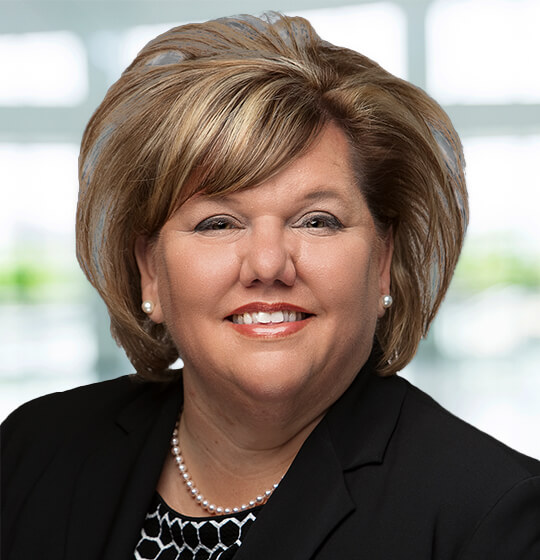In this installment of our Workplace Strategies Watercooler 2025 podcast series, three key members of our Diversity, Equity, and Inclusion (DEI) Compliance Practice Group—Simone Francis (St. Thomas/New York), Scott Kelly (Birmingham), and Nonnie Shivers (Phoenix)—address the status of DEI initiatives as they face unprecedented scrutiny. The speakers start by level setting about the status of equal employment opportunity laws, Title VII, Section 1981, and protected characteristics, while outlining strategies for adapting to increased DEI oversight and initiatives from the new administration. Nonnie (who co-chairs the firm’s DEI Compliance Practice Group) drills down on the guardrails organizations can put in place regarding resource and affinity groups in the workplace, in addition to the legal status of quotas and preferences. Simone shares perspectives on the importance of identifying the goals of resource groups when assessing their legality and utility for an organization, and whether organizations have used objective data in designing these programs. Scott probes the usefulness of data regarding the policies, design, and implementation of resource groups especially when ensuring the practices of these groups do not go far afield from the policies used to implement them. Finally, Scott stresses the importance of internal and external communications regarding these programs while assessing their effectiveness.
Workplace Strategies Watercooler 2025: DEI Under Scrutiny—Adapting to Increased Oversight and Policy Changes

Transcript
Announcer: Welcome to the Ogletree Deakins podcast, where we provide listeners with brief discussions about important workplace legal issues. Our podcasts are for informational purposes only and should not be construed as legal advice. You can subscribe through your favorite podcast service. Please consider rating this podcast so we can get your feedback and improve our programs. Please enjoy the podcast.
Nonnie Shivers: Hi everyone. We’re here in Vegas for our spectacular annual client seminar Workplace Strategies. I’m here with Simone Francis from our New York and St. Thomas offices, and Scott Kelly from Birmingham. Nice to have you both here with me.
Scott Kelly: Thanks for having us.
Simone Francis: Yes, great to be here, Nonnie.
Nonnie Shivers: So, the number one question that Simone, Scott, and I as core members of our Diversity, Equity and Inclusion Practice group, have gotten here at Workplace Strategies is, is diversity, equity, and inclusion, or the acronym even, DEI, dead? Well, it’s a difficult question to answer, but we don’t like lawyers who say it depends. So, we’re going to try to answer that question for you in a concise manner that’s helpful to you.
So, what you really have to do to answer that question is, one, understand the law, and two, lean into the law. And then you’ve got to assess your programs and understand the universe of DEI programs by whatever name you may be operating them or may have shifted into, such as belonging or inclusion. You have to lean into the law and then look at those programs, and that’s what we’re going to work through here today to try to be of maximal help in navigating these seismic changes.
So, the first topic is obviously leaning into the law, that’s the most crucial, if not fundamental, lens of review for everyone engaging in this assessment. Whether it’s internal or preferably external, as a privileged assessment with counsel for the purposes of obtaining legal advice. Now, where we like to start, this is reminding everyone, the law always evolves. Case law comes out, case law is overturned. But Title VII Section 1981 and the Equal Protection Act have not changed, or the Equal Protection Amendment have not changed. EEO laws have always, since their inception, prohibited making employment decisions in whole or in part based on protected characteristics, including race and sex.
So, what that means is that we could not use race, gender, or other characteristics as a negative or a positive factor, even if it wasn’t the deciding factor in making decisions that impacted terms and conditions of employment. Of course, a wide variety of things have continued to evolve since the Fair Admissions decision by the Supreme Court, but the recent executive orders that all of you have been following and may be impacting you, depending on whether you’re a federal contractor, a money recipient, or a private employer, all of you are impacted in some way, shape, or form, have to be looking at those laws as well as Section 1981, which impacts and covers contracting based on race and then the state analogs to determine then what your risk tolerance is. And understanding the law on specific topics as you do this assessment is really critical.
So, as just one of many examples. We know that the vast majority of companies have employee resource groups, affinity groups, business resource groups, whatever you might call them, all by different names depending on the nature of your organization and their purpose, of course. Well, there’s case law out there on ERGs. You should know what that law is. You should fall in line with those legal guardrails. One of the most important, and this is just one sample of many, but you have to drill down, is that you have to make ERGs, BRGs, affinity groups open to all in both policy and in practice. And that means not just membership, but also the opportunities afforded to members of those groups.
So, when we say lean into the law, it’s not just the general precepts of Title VII or Section 1981. It’s also how has the law been interpreted, and are you willing to defend those programs? Because remember, the executive orders do a variety of things or attempt to, they also contravene existing law, and that can’t be the basis of a lawful executive order. But what they do is chill lawful DEI as well as seek to end unlawful things like quotas if those are being used or preference, as we discussed, which Title VII, Section 1981, and the other laws have never permitted.
So, once we know the law, then we’ve got to figure out, well, we have these programs and we’re interested in continuing those, but we’ve really got to look at the why. What’s the business reason? Simone, how do we unpack defining the business reason?
Simone Francis: Yeah, so Nonnie, and for everyone in the audience, this is becoming increasingly important to really take a step back and think about as these programs come under scrutiny, as we do risk assessments, let’s think about the why. You may have programs, everyone has programs, things that they’ve done, whether it’s diverse slates or employee resource groups or aspirational goals, and there may have been a purpose when you started with those, but now is the time to really take a step back and look at what is the problem that we’re solving? Why do we have this particular program, policy, practice in mind, and is it really delivering the results that we need to drive our business forward to remain compliant with the law?
And doing that exercise can be helpful for a number of reasons. It also helps to determine how we might pivot, how we may reprogram and reinvent our programs, or refine them if we know what the problems are that we’re trying to solve, why we have them in place. And as you do that work within your organization, we’ll talk about doing that in a privileged assessment in a few moments, but it’s important to think about what groups are impacted. So, if we have, for example, a diverse interview panel or a diverse slate, or we’re utilizing some version of the Rooney Rule, if our programs are truly expansive, if they’re additive, then the risk profile may be significantly less. But if the actual result of our program is that we are not giving equal opportunity to all, either in name or in practice, that is something that employers need to be focused on.
The other thing to look at and consider is has any objective data been utilized in designing a program and in renewing and refreshing that program? Now, data collection, we’ve talked about that in a number of our programs and our webinars, and collecting data, distributing data, relying on data is something that we should be doing under privilege. But thinking about the data and what data supports our efforts as we construct barrier analysis, that is an important part of the exercise that a number of our clients are going through.
And then, finally, is the program open to all? Not just is it open in name, but is it actually open in practice? Do we not only say that our employee resource groups are open to everybody, but are the distribution lists open? Are the opportunities that are offered within a group, whether it’s to participate in mentoring, to attend leadership development programs, are those programs really open to all? And digging into the details of what we’re doing, why we’re doing it, what problems we’re solving, and how those are implemented and who is impacted are important components of the disciplined exercise that we’ve been discussing for several months, and really well before 2025.
Scott Kelly: So, Simone, I think the next thing that we’ve been working with clients on, once we get the answers to those really great questions that you’ve asked are, okay, we’ve got a particular program perhaps or an initiative, really what type of information about that program are we needing to look at to be able to give some type of analysis of the legality of it, both from a federal, local law, state, and even a global level? Because we’ve seen an increase from this administration, particularly for federal contractors that might be operating in different jurisdictions outside of the U.S. for certifications coming from the State Department, embassies, and things for these global companies that might have U.S. employees.
So, in doing all of this, I think it’s important to look at a series of different things, kind of the universe, to assess. And I will be a self-admitted kind of data nerd. I really like data. I think data can certainly tell stories. You can manipulate data, but if you look at it in a measured way and in a disciplined way, I think the data can sometimes tell a story that you might not see being played out in some of the qualitative-type information that you’re finding out. So, data is an important aspect of it.
So, if you’re dealing with, say, the ERG, BRG program, I think part of the data that we’re looking at there is, one, how many programs do you have? Look at the data of who’s a member of all of these programs to ensure that there’s openness to all. So, that’s just an example there. Then the policies related to that, maybe the policies for ERG or BRG programs, just generally. Looking at the policies, maybe each one of your programs has an individual charter, maybe there’s something that really doesn’t pertain to the ERG specifically in some of your handbook or your code of conduct or other aspects that you could lean into as part of your company culture or some of just the requirements that you have for the way you want your employees to treat one another. That would be something that might not come to mind because you’re just looking, say, at the BRG or the ERG program. But really, you want to go kind of as broad as you can to make sure that you’re doing the right assessment here.
And we’ve talked about policies, but there also could be different practices that could be going on. The important thing when you have this eye is to be looking at the different policies and make sure that the practices somewhat conform and support the policies that you have, and don’t go far afield from them. Really looking at the program. What I have found when I work with employers all the time is you think that you know what might be going on within your organization, but quite frankly, when you start talking to people, they’ll be like, no, we really don’t do that. Yeah, that’s still on the website, but we haven’t done that in a few years; we actually do it this way now. So, sometimes actually talking to different people about their experiences, I know that can be difficult to maintain the privileged nature of these assessments, which I think is very important to do, especially in the current environment. But I do think that that level of information can provide some valuable insights.
Also, looking at the different types of training or education that might be offered by your BRG or ERG programs. That could be a problem if you’re allowing certain members to have access to that information or to those terms and conditions or benefits of employment, and not others. And another area that’s really important to assess is your internal communications about these programs, formal communications, and informal communications, and then what you might say externally as well. You need to make sure all of that lines up as you’re doing the assessment. And then on the back end, it might be that you’re going to be making some changes to some of these programs. You really need to think about the communication plan related to those changes and some change management that might need to be involved to make sure that as you’re trying to eliminate or reduce some risk, maybe from this administration or from other areas, that you don’t create some internal risk with your internal stakeholders. Those could be your employees, your applicants, your customers. And we’ve seen a lot of clients with those challenges in this environment.
I think that in addition to the things we’ve talked about, you can also, depending upon what the program is, we’ve been talking about ERGs and affinity groups, but it might be that you need to talk to the different leaders of those groups. If there’s any type of documentation, like some I’ve seen you’ll actually have descriptions of what the leadership requirements are. Look at everything, leave no stone unturned there.
So, with that, I think that wraps up some of the information that we’ve shared with our clients here at our Workplace Strategies seminar in Las Vegas. Thanks for joining us today, and be sure to look out for more podcast webinars and other content. We certainly are trying to keep you all updated with as much information as we can, and it’s coming out at a pretty aggressive speed as things in this area change frequently. Thank you.
Announcer: Thank you for joining us on the Ogletree Deakins podcast. You can subscribe to our podcast on Apple Podcasts or through your favorite podcast service. Please consider rating and reviewing so that we may continue to provide the content that covers your needs. And remember, the information in this podcast is for informational purposes only and is not to be construed as legal advice.

Diversity, Equity, and Inclusion Compliance
Our attorneys are ready to assist with the full spectrum of workplace DEI-related issues. The members of Ogletree Deakins’ Diversity, Equity, and Inclusion Compliance Practice Group have extensive and unique experience assisting employers.





